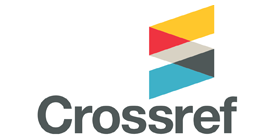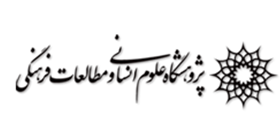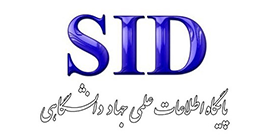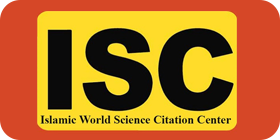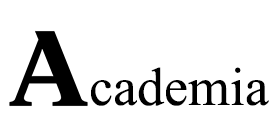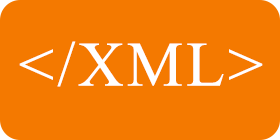Fitting a Structural Media Model to Reduce the Effects and Consequences of Human Rights Violations in Iraq
Keywords:
Human rights violations, media awareness, media skills development, structural disintegration, ideological deviation, IraqAbstract
Purpose: This study aims to fit a structural media model for reducing the effects and consequences of human rights violations in Iraq by analyzing the relationships among environmental, ideological, structural, and media-related variables.
Methods and Materials: The research employed a quantitative survey design using a correlational approach. The statistical population consisted of human rights activists and experts in Iraq during 2024–2025, with a sample of 384 participants selected via convenience sampling based on Cochran’s formula. Data were collected through a validated questionnaire derived from qualitative data analysis. Confirmatory factor analysis, composite reliability, and Cronbach’s alpha were used to assess the measurement model. The structural model was evaluated using SmartPLS 4 and SPSS 27 software to estimate path coefficients, R², Q², and GOF values, confirming model fit and predictive relevance.
Findings: The results demonstrated that macro-environmental dynamics significantly influenced human rights violations (t = 9.165, p < 0.001), while human rights violations significantly affected media skills development (t = 4.107, p < 0.001) but not media awareness (t = 1.263, p = 0.207). Ideological deviation had a significant effect on both media awareness (t = 2.335, p = 0.020) and skills development (t = 2.240, p = 0.025). Structural disintegration significantly impacted media awareness (t = 4.392, p < 0.001) and skills development (t = 3.725, p < 0.001). Both media awareness (t = 3.816, p < 0.001) and skills development (t = 5.257, p < 0.001) significantly influenced international image optimization. The model’s GOF score (0.594) indicated strong overall fit.
Conclusion: The findings underscore the multifactorial nature of human rights violations in Iraq and highlight the critical role of media-related strategies—particularly skill development—in mitigating their impact and enhancing international perception. Structural and ideological barriers must be addressed to fully leverage media's transformative potential.
Downloads
References
Abbāsi Ashlaghi, M., & Norouzi Firouz, R. (2018). The Role of Media in Developing Human Rights Norms in the Era of Globalization. News Sciences Quarterly(27), 49-66. https://www.magiran.com/paper/1982617/le-r-le-des-m-dias-dans-le-d-veloppement-des-normes-relatives-aux-droits-de-l-homme-l-re-de-la-mondialisation?lang=en
Ahmadzadeh, A. (2023). An Analysis of the Obligations and Limitations of Public Media in Promoting Human Rights Islamic Azad University, Bandar Anzali Branch].
Alizādeh, H., Nikhāh, R., Javādi, M. H., & Seyyed Esfahāni, S. H. a.-D. (2024). The Security Council: From Confrontation Between Guardians of International Peace and Security to Violators of Human Rights. Scientific Quarterly of Islamic Human Rights Studies, 13(3), 61-78. https://www.pfbaj.ir/article_214141.html?lang=en
Alquraan, S., & Aduse, H. (2022). The Role of Social Media in Creating Human Rights Culture Among Jordanian University Students. Jordanian Journal of Law and Political Science, 14(1). https://doi.org/10.35682/jjlps.v14i1.342
Azadi, F. (2024). The Development of Human Rights Principles in Public Legal Systems: Challenges and Opportunities. Quarterly Journal of Applied Studies in Social Sciences and Sociology, 8(5). https://en.civilica.com/doc/2231142/
Biparva, A. (2016). The Role of Media in Guaranteeing and Developing Human and Citizenship Rights Imam Reza University, Faculty of Literature and Humanities].
Bloomfield, A. (2016). Norm Antipreneurs and Theorising Resistance to Normative Change. Review of International Studies, 42(2), 310-333. https://doi.org/10.4324/9781315707341
Bozorgmehri, M., & Kia Rostami, M. (2017). Human Rights Violations Through Terrorist Acts and the Mechanisms to Combat Them. Global Politics Quarterly, 6(1). https://elmnet.ir/doc/1799200-42131
Brutger, R., & Strezhnev, A. (2017). International Disputes, Media Coverage, and Backlash Against International Law. University of California, Berkeley. https://cpb-us-w2.wpmucdn.com/web.sas.upenn.edu/dist/f/164/files/2018/07/Paper_5-21-2018-2j16nmg.pdf
David, Y., & Shalhoub-Kevorkian, N. (2022). Racializing human rights: political orientation, racial beliefs, and media use as predictors of support for human rights violations - a case study of the Israeli-Palestinian conflict. Ethnic and Racial Studies, 46(10). https://doi.org/10.1080/01419870.2023.2166792
Dehbanipour, R., Ghassemi, J., & Etemad, A. (2025). Enhancing Human Rights in Light of Structural Transformations in International Law. Geography Quarterly (Regional Planning), 15(58), 500-560. https://www.jgeoqeshm.ir/article_217152_en.html
Ekpa, S. (2016). Human Rights Violation. https://ssrn.com/abstract=2738447
Esref Keles, A. (2022). Seeing the Pain of Others: Understanding Human Rights Abuses Through Journalistic Writings, Films, Documentaries and Photography. İçtimaiyat, 6(1), 230-243. https://doi.org/10.33709/ictimaiyat.1057486
Hajmohammadi, M. (2022). The Functions of Social Networks in Preserving and Observing Human Rights. Legal Studies Quarterly, 28, 131-146. https://www.noormags.ir/view/en/articlepage/1915908/
Hosseini, S. M., & Rahaee, S. (2024). Due Diligence: A Criterion at the Heart of the International Human Rights System. Human Rights Journal, 19(1), 53-78. https://humanrights.mofidu.ac.ir/article_709655.html?lang=en
Montazerān, J., & Musāzādeh, R. (2021). Dimensions of Human Rights Violations in Pharmaceutical Restrictions Due to U.S. Sanctions Against Iran: How They Are Represented in American Media. International Media Research Journal, 6(1). https://ensani.ir/fa/article/474180/
Nemkova, P., Ubani, S., Olcay Polat, S., Kim, N., & Nielsen, R. (2023). Detecting Human Rights Violations on Social Media during Russia-Ukraine War. https://arxiv.org/abs/2306.05370
Omāni, M., Bigi, J., & Pourqahramāni, B. (2023). Violation of Fundamental Human Rights Through the New HAARP Technology. Biannual Journal of New Technologies Law, 4(7). https://mtlj.usc.ac.ir/article_166467.html?lang=en
Qolizādeh, I. (2023). Human Rights Violations in Cyberspace. Fourth National Conference on Cyber Defense, Maragheh.
Rāʿī Dehqāni, H., & Maghāmi, A. (2022). The Impact of Human Rights on the Evolution of the Nature, Structure, and Norms of International Law. Legal Research Journal, 21(52), 95-120. https://jlr.sdil.ac.ir/article_145262.html?lang=en
Rastami Khorasgani, A. (2021). The Relationship Between Media Law and Human Rights. First International Conference on Knowledge and Technology in Law and Humanities, Tehran.
Sāberi Tavallāʾi, A. (2025). Human Rights Against Human Rights: The Discourse of Human Rights from Liberation to a Tool of Domination. Islamic Law Research Journal(67), 1-46. https://journals.isu.ac.ir/article_77376.html?lang=en
Shāfeʿ, M. S., & Dolāh, A. (2016). An Analysis of the UN Security Council's Approach to Managing Severe Human Rights Violations. Global Politics Quarterly, 5(3). https://ensani.ir/fa/article/529998/
Sharīʿatī Aṣl, A. (2023). Arbitrary Detentions and Human Rights Violations in the Occupied Palestinian Territories Before the Recent Gaza Crisis: A Review of the Report by UN Special Rapporteur Francesca Albanese. 14th National Conference on Law, Social Sciences, Humanities, Psychology, and Counseling, Shirvan.
Shayanfar, S. (2023). Sanctions and Human Rights Violations from the Perspective of International Law with Emphasis on Unilateral Sanctions Against Iran. Scientific Quarterly of Islamic Human Rights Studies, 12(4), 139-160. https://www.pfbaj.ir/article_197982.html
Shojāʿ, A., Sābernezhād Alaviyān, A., & Soltāni, H. (2023). Phenomenology of Fundamental Human Rights Violations by Authoritarian Governments in Cyberspace. Legal Studies of Cyberspace Quarterly, 2(2). https://journals.iau.ir/article_703200.html?lang=en
Shokouhi, A., & Abbāszādeh Fathābādi, M. (2022). An Assessment of the UN Human Rights Council's Performance Regarding Human Rights Violations in Bahrain. Biannual Journal of Human Rights and Citizenship, 7(1). https://ensani.ir/fa/article/566045/
Shokri Bafrājerd, M. (2023). Human Rights Violations, Genocide, War Crimes, and the Use of Unconventional Weapons in Gaza. Seventh International Conference on Jurisprudence, Law, Psychology, and Educational Sciences in Iran and the Islamic World, Tehran.
Skarstad, K., & Strand, H. (2016). Do human rights violations increase the risk of civil war? SAGE Journals, 19(2). https://doi.org/10.1177/2233865916629567
Zuboff, S. (2019). The Age of Surveillance Capitalism. Public Affairs. https://books.google.com/books/about/The_Age_of_Surveillance_Capitalism.html?id=u3GmwgEACAAJ
Downloads
Published
Submitted
Revised
Accepted
Issue
Section
License
Copyright (c) 2025 Suzan Mehdi Fayyad Al-Shammari (Author); Ali Jafari; Aysar Khaleel Ibrahim, Mojtaba Aghajani (Author)

This work is licensed under a Creative Commons Attribution-NonCommercial 4.0 International License.




